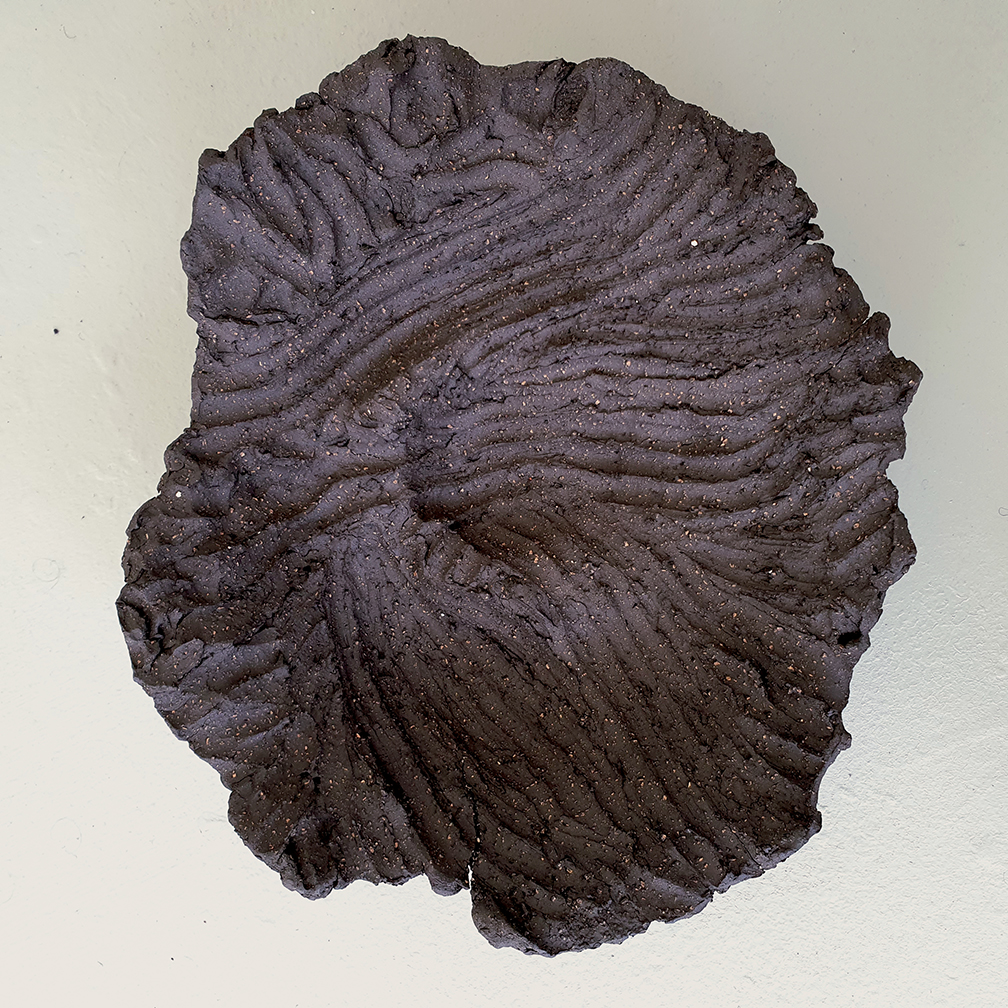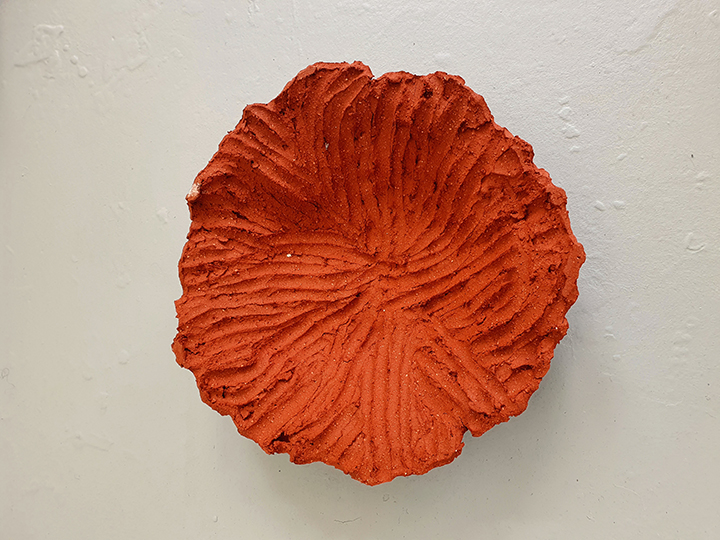sx art 1
-Tessa Mars
EAT THE LAND
For this inaugural issue of sx art, Haitian artist Tessa Mars shares works that emerge from new contemplations of identity and politics from her current base in Amsterdam. Encountering a different version of an old Creole lullaby that was sung to her as a child, the artist considers its revision of colonial encounter, and puts to canvas images of human and non-human inhabitants of a conquered land who fight back. Mars’ elaboration of her process is the first of three sx art features that will share Caribbean artistic interventions speaking to the current, unfolding global ecological crisis—with special attention to historical and contemporary figurations of human-animal relations—over the next year. Andil Gosine
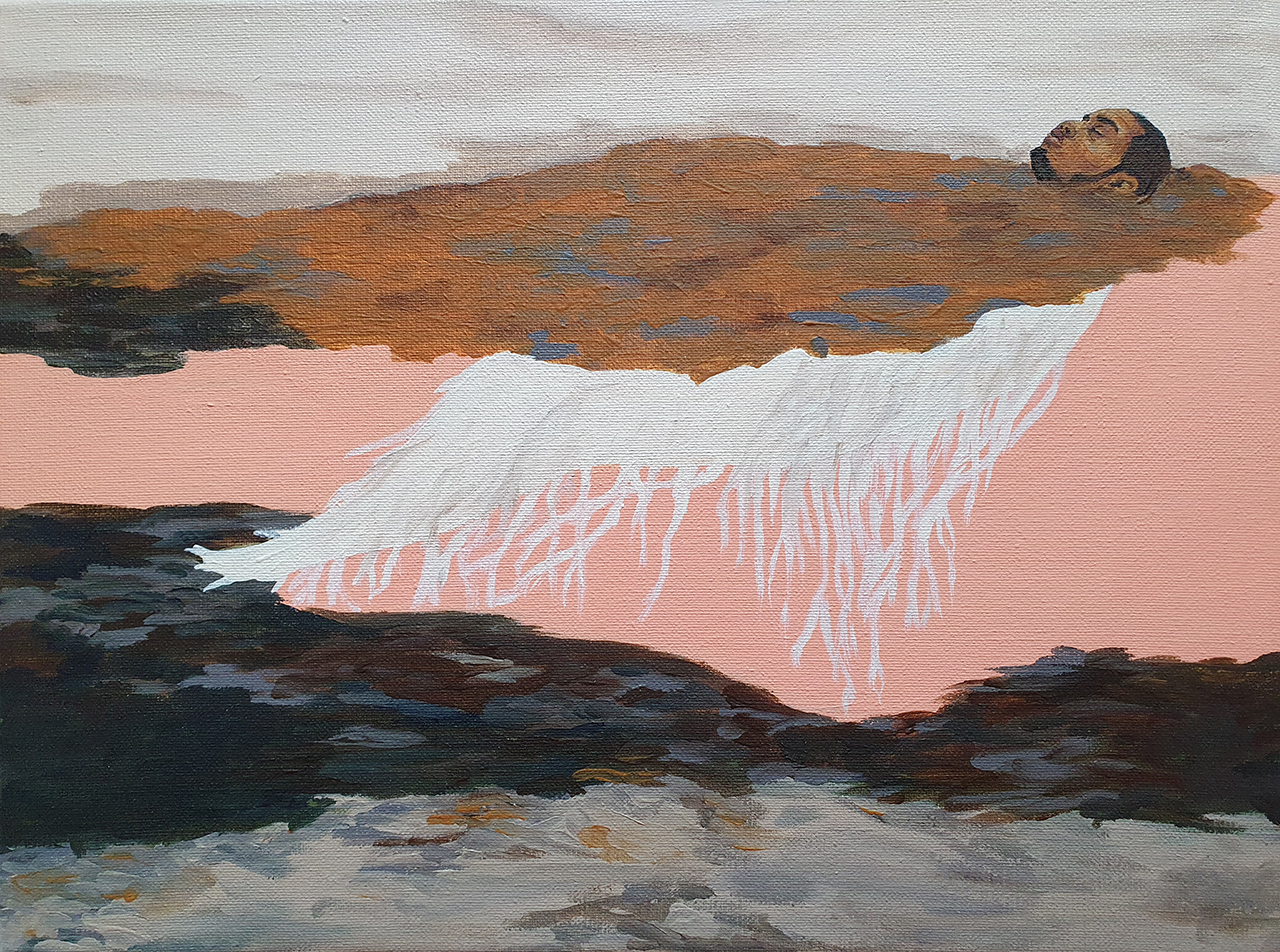
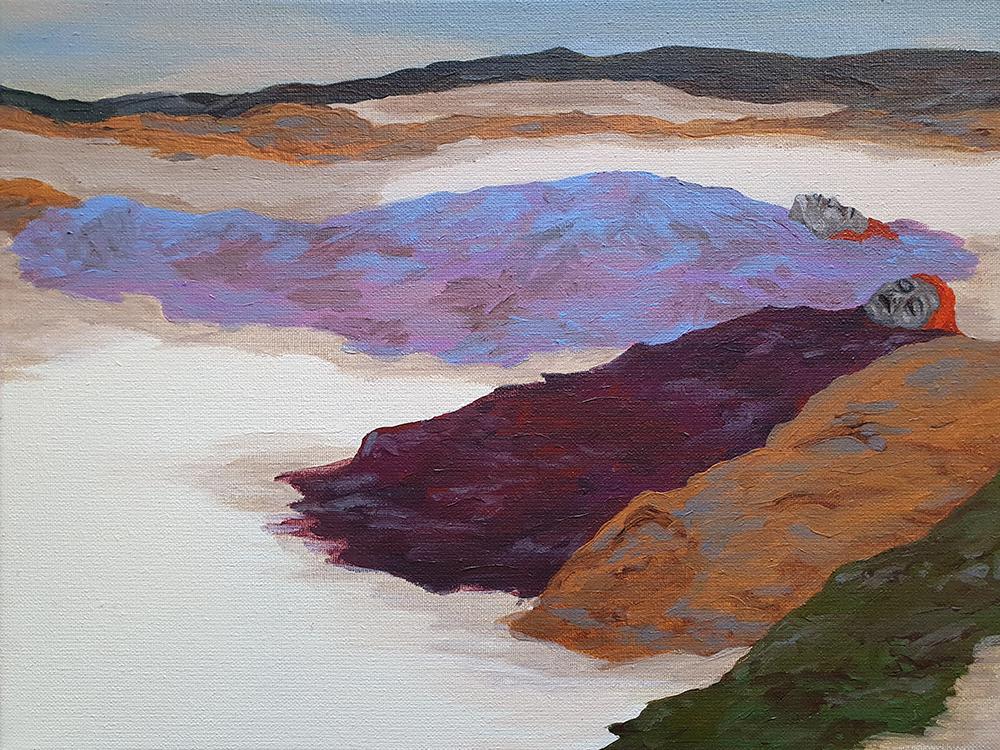
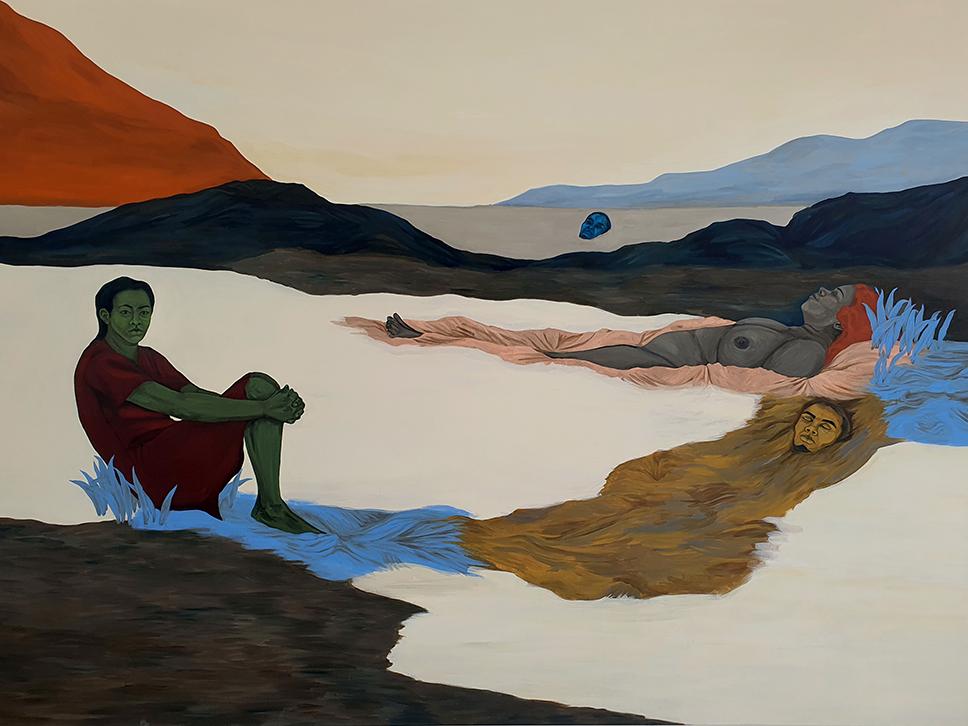
When starting a new body of work, the first step I take is usually to reconnect with pieces of Haitian lore, historical figures, facts and fiction in which my life experiences are entwined. I am inhabited by this constant need to interrogate and challenge the narratives that helped build my identity, to question how they were passed down to me and in doing so to constantly renew my understanding of haitianité, of myself. I hunt for silences, absences, and seek, find and create/re-create ways to address them. I now recognize these silences are wounds, and am aware that healing from this history requires recognition and contention with them.
In January 2020, I moved to the Netherlands to attend the Rijksakademie van Beeldende Kunsten, an international artist residency program for research and experimentation. While this move was not intended as a permanent one, it mirrored the movements of thousands of Haitians leaving the island once more due to the violent chaos that has slowly been taking over every aspect of life there. This move to Amsterdam marked the beginning of a period of transition in my personal life but also of transition in my work, in how I frame and understand my practice and the direction in which I want to be moving. That year I encountered the writings of Haitian historian Jean Casimir, which would slowly help me put new words around ideas that had previously been only vaguely formed. Reading and engaging with Haitian history with the tools offered by a decolonial framework helped reshape my interest in the legacy of the revolution.
Remembering the radical and transformative idea of tout moun se moun as the bedrock of the Haitian revolutionary project has shifted my focus from investigating the projections of the nation state, to center spirituality, particularly as experienced through our relationship to the land and community formation, as areas of research into sovereignty and collective wellbeing.
My first step once in the Netherlands was to start looking for any connection, any trace of wisdom that could link Haiti and the Netherlands and could help me feel comforted in my presence there. I found this soothing and invigorating link in the words of a lullaby, “Dodo titit”, a version of the song recorded in 1954 that I had never heard of (Dodo ti titi manman, Creole Songs of Haiti, Michele Dejean group, 1954.)
“Dodo titit” is a lullaby my mother used to sing to me, anytime the mood was right, be it night or day. The lyrics have been inscribed in my heart ever since: “Sleep child for if you don’t the crab will eat you, but if you do we will feast on crab stew.” Although I truly loved this song for its soft sweetness, for the intimacy it created between my mother and me, its meaning remained a mystery to me for a very long time. What in the world was that crab that could eat me while I was awake and how in the world would I be able eat crab in my sleep? I never asked these questions out loud because during the singing, my mother’s voice and her presence were my salvation. The lullaby was a message warning of existing threats, but the message itself came from a guide, with warmth and the promise of a feast that was enough to quell my fears in the moment. I felt most anxious when I was alone, wondering about how to protect myself and my loved ones from the unknown, from the monsters that find you when you are awake and those that find you when you are asleep.
The version I found in Amsterdam is not the one that was sung to me as a child; that one didn’t mention humans at all. But this version seemed to be the one I needed as an adult, one where the “monstruous” action is known: “I went to the sea and I went to the river. I met a Dutch man cutting trees. As the (white) man was cutting the tree, the tree was cutting him back.”
From this tale of extraction from nature, of separation and domination, we learn of a kind of justice that is not limited by linear time. The tree will cut back and the feast will still be delicious. From this tale, I know that my people know, my people have seen, they understand and thus, I know too. The song remains for me a marker of metaphorical beginning, a guideline for the work I want to be making now. That is, continuing the work of my ancestors and telling stories that similarly bring hope and visions of more serene possible futures.
I have been collecting stories, snippets of audio and video messages Haitian people share with each other via WhatsApp, for many years now. In these messages we tell each other about our experiences abroad, in the Dominican Republic, in Chile, in Brazil, in Mexico, across the South American jungles, and into the US and Canada. We share the ways of this or that place, of this or that people, the struggles, the successes. And just like the lullaby, for me these stories gave shape to a map of the experience of Haitian people in the world. I gained new understanding of how we move and how we transmit information, how we transform and turn our experiences into wisdom for our children, for each other.
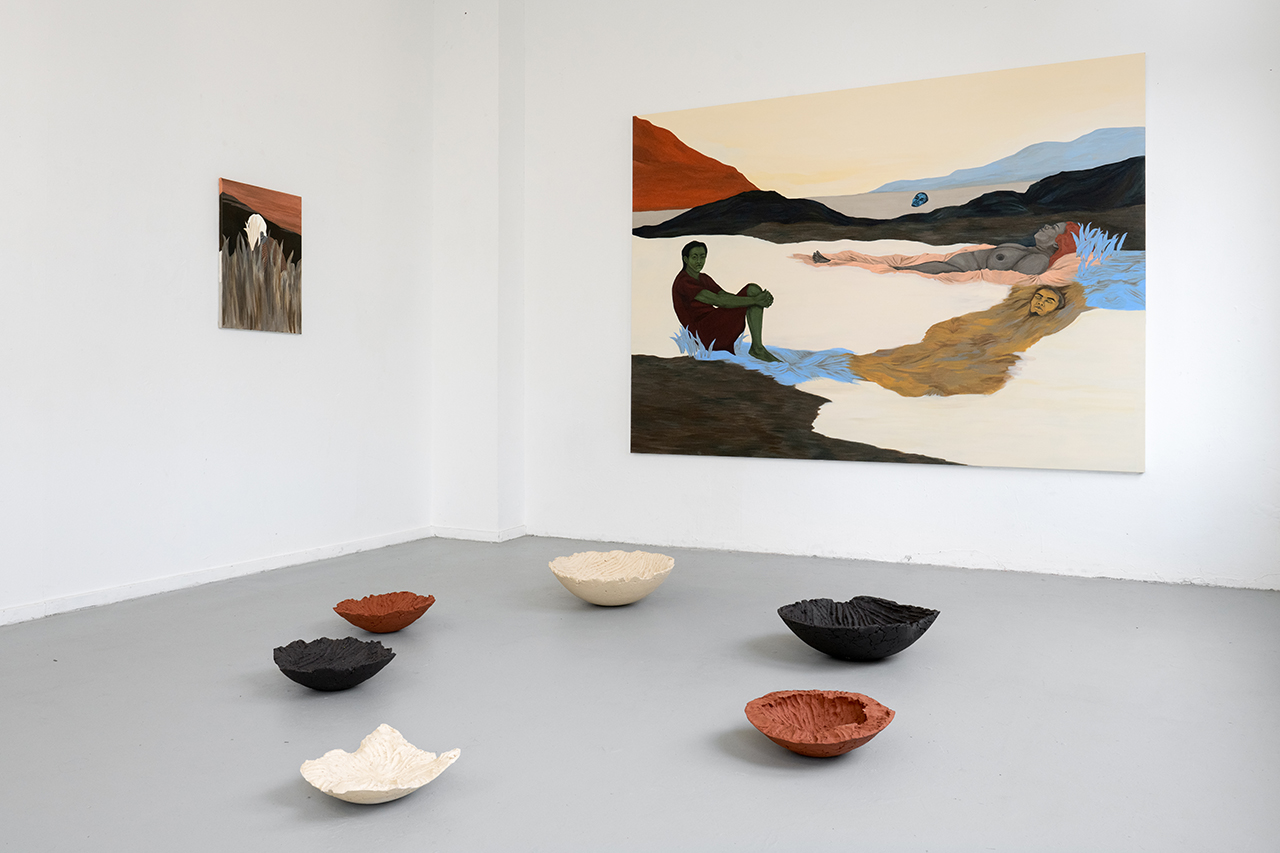
One such journey that stays with me is that of a woman who tells a story of encountering a demon in the jungle who tried to swallow her and her child whole into the water. Her story, too, foregrounded warning as protection. According to her, she was rescued from drowning in quicksand (her “crab”) by her fellow travellers. Her tale is a lullaby in the making. There are demons in the jungle, child; beware.
When I observe the outside world through Haitian eyes, as Jean Casimir suggests, it becomes obvious to me that what my compatriots and I are doing, what so many other Caribbean people are doing through our movements, is retracing the steps thousands of people have taken before us. We move from island to island, from island to continent, like the first inhabitants of these territories, with the Caribbean Sea as the matter that links us all. Our movement is natural, our movement is correspondent and in conversation with the land, and with time.
The stories I want to tell now are about envisioning and reconnecting with ancestral knowledge, with a spiritual space that connects people and land through time, from the first living beings of our territories who freely travelled them, to those looking for safe passage across borders now seen and unseen. This spiritual space is beyond the reach of the nation state and is the core, the interiority where our collective consciousness, experience and wisdom reside protected. This space can provide us with an escape. It is where the dangers are known and are being dealt with simultaneously in the past-present-future. Where we are never alone. I like to think that we all have access to this place even if we sometimes need to be told how to access it.
My reporting of this analysis is through painting and papier mâché sculptures and through writing and sound pieces. Gestures, words, songs and rituals become keys to reach a different kind of embodied experience, a different kind of presence. They aspire to recreate the magic of my mother’s lullaby.
